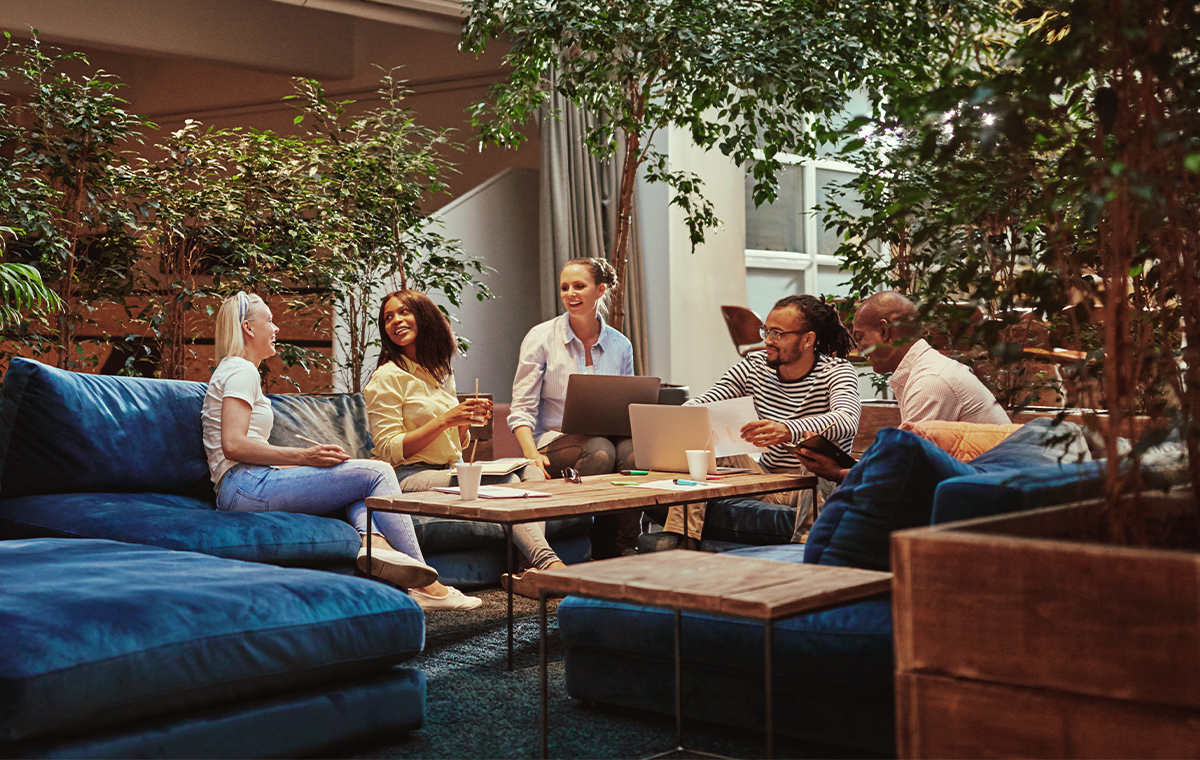Today landlords are trying to navigate the challenges and demands of a changing workforce. The future of work is constantly in flux, which is why the adoption of hybrid work has left companies unsure of their real estate investments.
Due to conflicting information in the market, along with the need to address tenant and employee demands to engage and retain talent, the question landlords need to ask themselves is no longer about where the best place to work is. Instead, it’s about how they can make investments into their properties that will provide the right environment for the people who need to use it.
According to Forbes, while both office owners and occupiers share an optimistic outlook about the future of office building usage, property managers are looking for new ways to generate revenue to combat low building occupancy. And, Harvard researcher Jacob Morgan found that companies that invested heavily in their employees’ cultural, technological, and physical environments were four times more profitable and generated two times more revenue than the average company.
Because of this, we understand that using workplace experience software to activate physical spaces that aren’t typically activated can garner endless revenue-generating possibilities.
Food and Retail Options
Landlords can activate their entire building or office spaces with new amenities from the local community. For example, this can include industry-leading order ahead, delivery, and convenience services. To help tenants save time and skip the lunch line, or to even improve their quick errands between meetings, property teams can enable food and convenience order ahead from local vendors through their workplace experience app.
By making it easier for tenants to order meals from on-site and local restaurants with app-based order-ahead features for food and beverage, tenants can get the most out of their workplace experience app while having a positive coworking space experience.
And, tenants and employees can come to the office and also benefit from exclusive discounts at local retailers, which can be hosted through a mobile app. Thus, the best investment a landlord can make is in an end-to-end workplace experience platform — one that can provide solutions for food and retail needs while also being built to provide for future needs.
Sustainability
Landlords can even use a workplace experience app to promote sustainability in their properties. By properly supporting and communicating sustainability initiatives, landlords, workplace experience teams, and employers can play a crucial part in protecting the environment and attract and retain tenants and employees in the modern workforce.
This is because tenants want more meaningful experiences that they will want to participate in again and again, such as volunteering and corporate social responsibility programs. In order to boost tenant engagement and tenant sentiment, landlords need building amenities that support sustainability efforts, details about community events, and coordinated participation in corporate social responsibility and volunteer events.
For example, by activating rooftop spaces, landlords can promote tenant satisfaction and sustainability. The roof of a commercial building may not seem like the typical place for nature, but open-air spaces can actually be an ideal way to support sustainable and ecological initiatives. The Aon Center in Chicago partnered with urban beekeeping company Alveole to use the rooftop space as storage for brood boxes. They were able to use hive-like crates where bees live and produce honey. Rooftops such as this can house urban farms to grow the food that feeds communities or landscaped gardens to give people access to greenspace.
Additionally, green rooftops lower surrounding air temperatures and reduce the building’s energy consumption. They can even increase savings for landlords with a lifetime operational cost savings of about $200,000 compared to traditional rooftops.
According to Dror Poleg, it’s important that landlords focus on flexibility, walkability, well-being, and sustainability through creative solutions like mentioned above. Ultimately, landlords need to listen to tenant feedback and enhance tenant experience with workplace technology as well as their workplace amenities if they want to navigate the future of work successfully. After all, the future of work is all about adopting a hospitality mindset and really making sure that buildings are living and feeling well, so that the people within them can also live and feel well..
Want to learn more about HqO’s workplace solutions? Schedule a consultation today.



